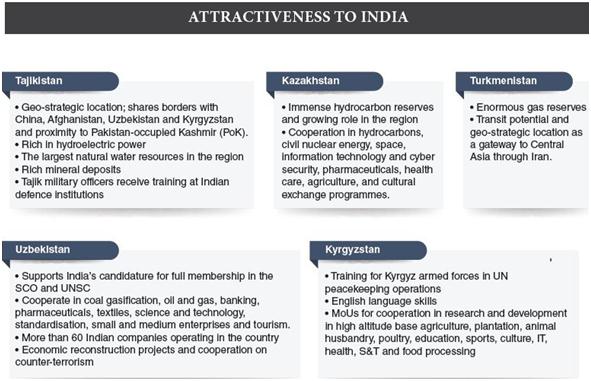|
Sub-topic GS-II: Effect of Policies and Politics of Developed and Developing Countries on India’s interests, Indian Diaspora. |
As India cements its position as one of the fastest-growing major economies of the world, its increased engagement with the Central Asian region can lead to mutually beneficial gains — both in economic and strategic terms.
What is Central Asia?

|

|
Connectivity Initiatives
|
|
Efforts are now being made to address the weak trade ties by encouraging cooperation among businesses on both sides, as is evident in the launch of the India-Central Asia Business Council in 2020. However, various other measures can also effectively strengthen the ties:
|
Shanghai Cooperation Organisation (SCO)
Eurasian Economic Union (EAEU)
Conference on Interaction and Confidence-Building Measures in Asia (CICA)
|
How far India and Central Asian countries will take this renewed, centuries-old relations remains to be seen. India must take into consideration its future energy needs and the market potential of the greater Eurasian region, and seize the opportunity to stretch its economic borders while maintaining its constructive approach.
Verifying, please be patient.